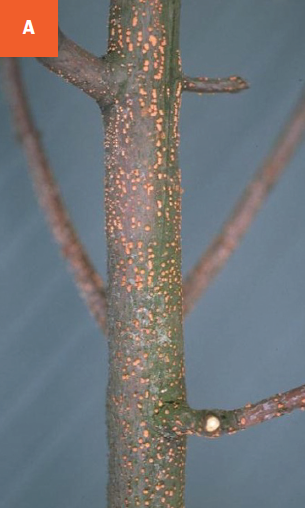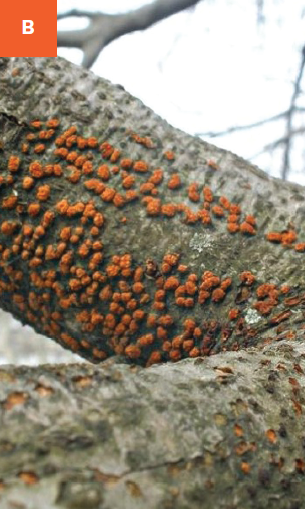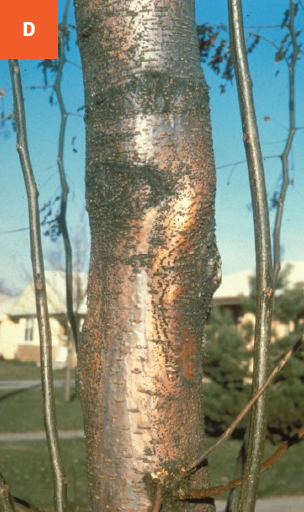Nectria Canker
Nectria spp. (fungus)
HOST Elm, honeylocust, maple, cotoneaster
DAMAGE/SYMPTOMS Following infection in spring, leaves and shoots of twigs and branches wilt. Cankers develop on branches and twigs and girdle the tissues from within, resulting in dieback. Clusters of spherical orange-colored fungal fruiting bodies (coral spots) emerge from infected bark. This disease can significantly damage newly planted, as well as established trees and shrubs.
DISEASE CYCLE Nectria spp. survives in canker tissue where fruiting bodies are produced. Spores emerge from the fruiting bodies and infect through wounds or weakened plant tissue. Stressed plants are especially susceptible. Infections result in the formation of cankers and in dieback of leaves, shoots, and branches.
MANAGEMENT Support plant health by providing adequate water and nutrients during the season. Avoid wounding plants. Remove and dispose of affected branches during dry weather. Disinfect pruning tools after each cut with 70% ethyl alcohol or a standard household disinfectant spray. Infections in the next season may be reduced by applying a fixed copper-containing fungicide to affected trees in early fall when leaves begin to drop.
A Coral-colored fungal fruiting structures on branch. B Tree severely infected by nectria canker. C Close-up of coral-colored fruiting bodies. D Canker development on tree trunk.




